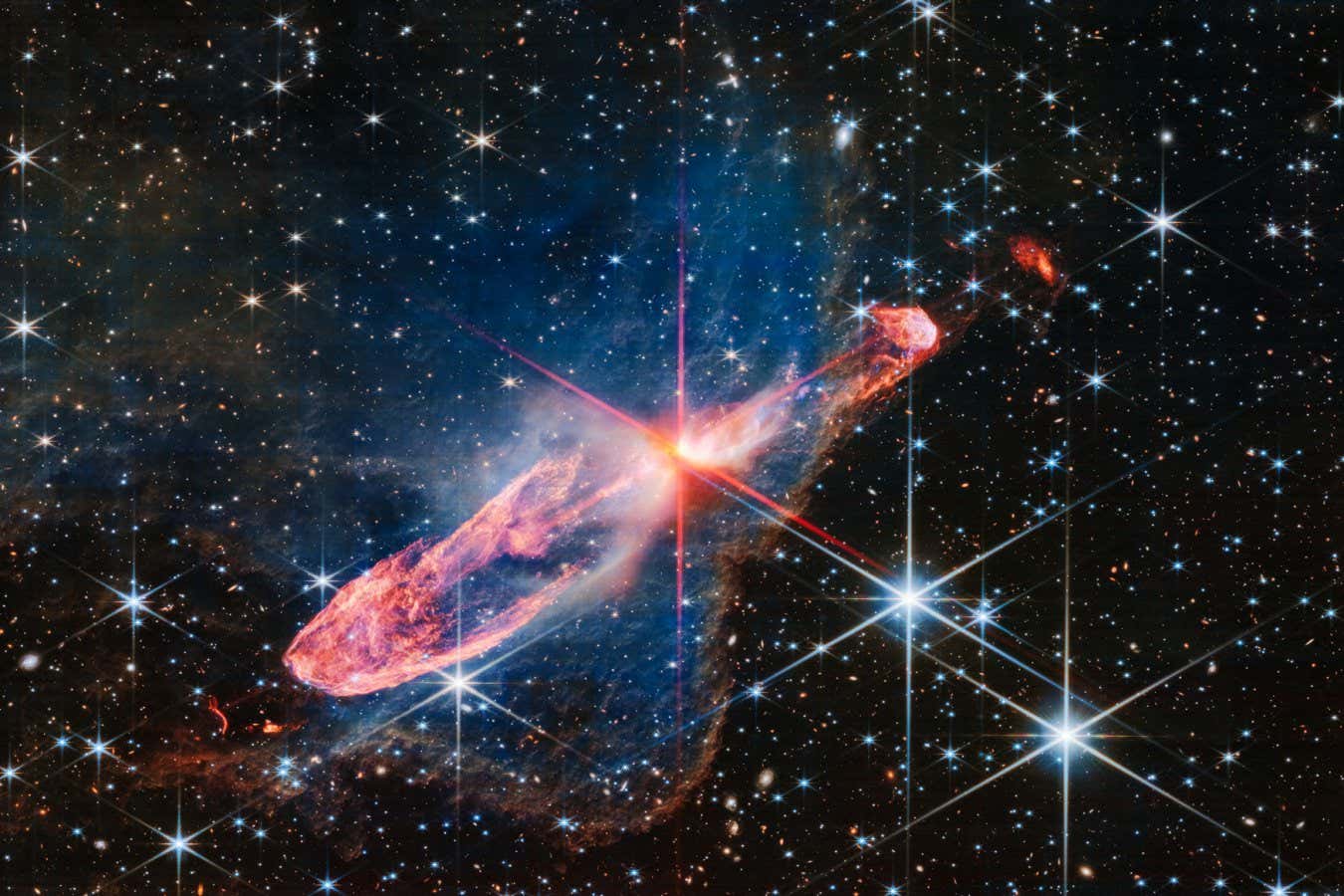The James Webb Space Telescope is looking ever further back in the universe’s history and the unexpected high luminosity of the sources it sees hints that the way we think stars form from gas in the early universe may need revision, astrophysicist Richard Ellis has revealed at New Scientist Live
By Alex Wilkins
7 October 2023
NASA’s James Webb Space Telescope has captured images of actively forming stars like this pair, known as Herbig-Haro 46/47, as well as seeing stars from near the cosmic dawn
STScI Copyright: NASA, ESA, CSA/STScI
We are tantalisingly close to seeing the beginning of the cosmic dawn, the time when the first stars and galaxies formed, with the James Webb Space Telescope (JWST).
“In the last 12 months, we’ve made more progress probably than within the last 20 years, because it’s such a powerful telescope,” says astrophysicist Richard Ellis at University College London.
Advertisement
Ellis spoke to a crowd at New Scientist Live at the ExCeL Centre in London on 7 October about the latest findings from JWST, which has been operational since 2022 and is still producing new science at a tremendous rate. “It’s a talk I couldn’t have given even six months ago,” he tells New Scientist.
Read more
The gravitational waves that could shed light on the cosmic dark age
Some of the most striking results have come from observations of the most distant galaxies that we can see, which correspond to a time just a few hundred million years after the universe began. These galaxies appear to be more luminous than theorists predicted, suggesting that we have probed back to an era when the physical conditions of how gas is converted to stars might be quite different.
